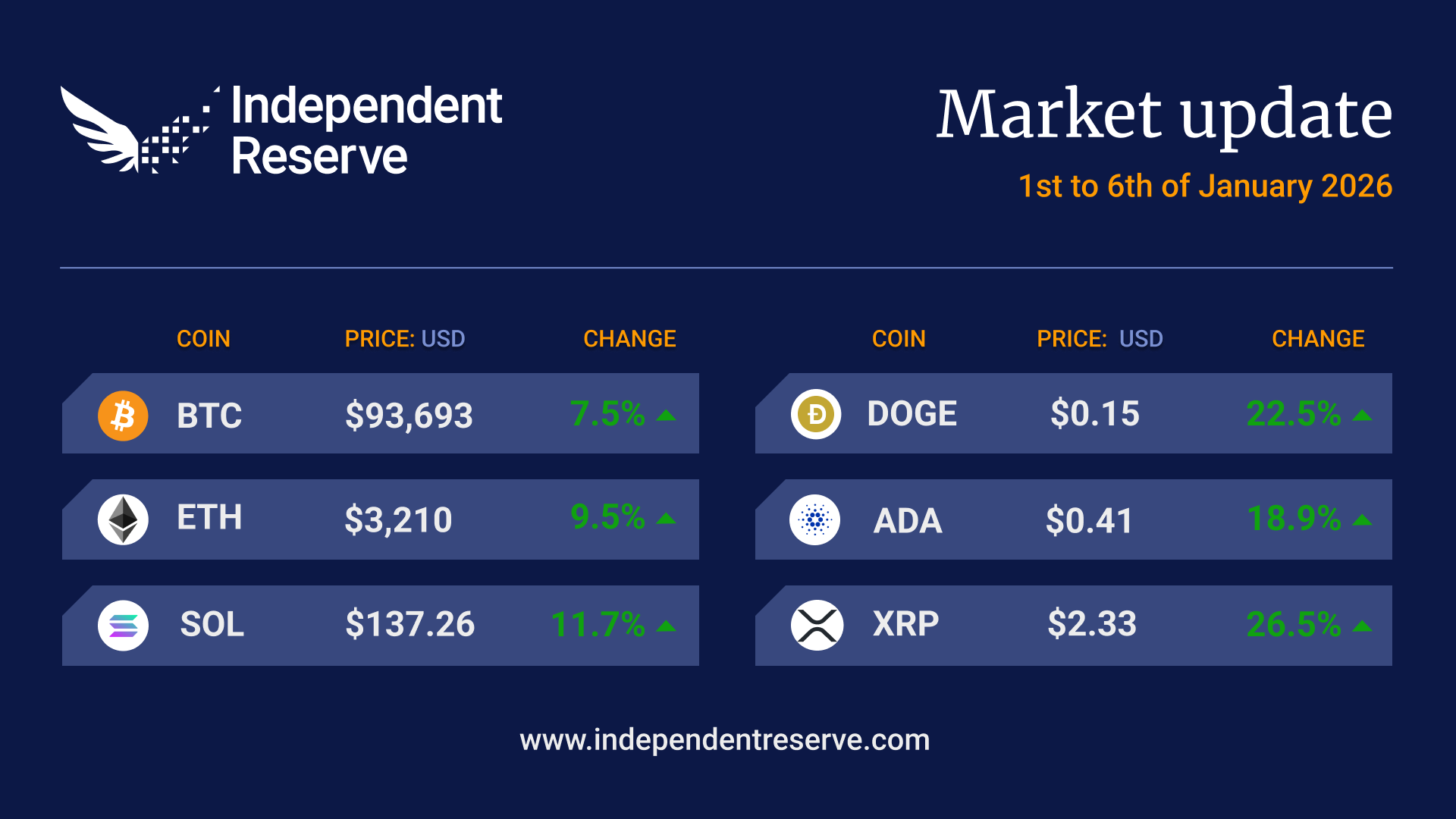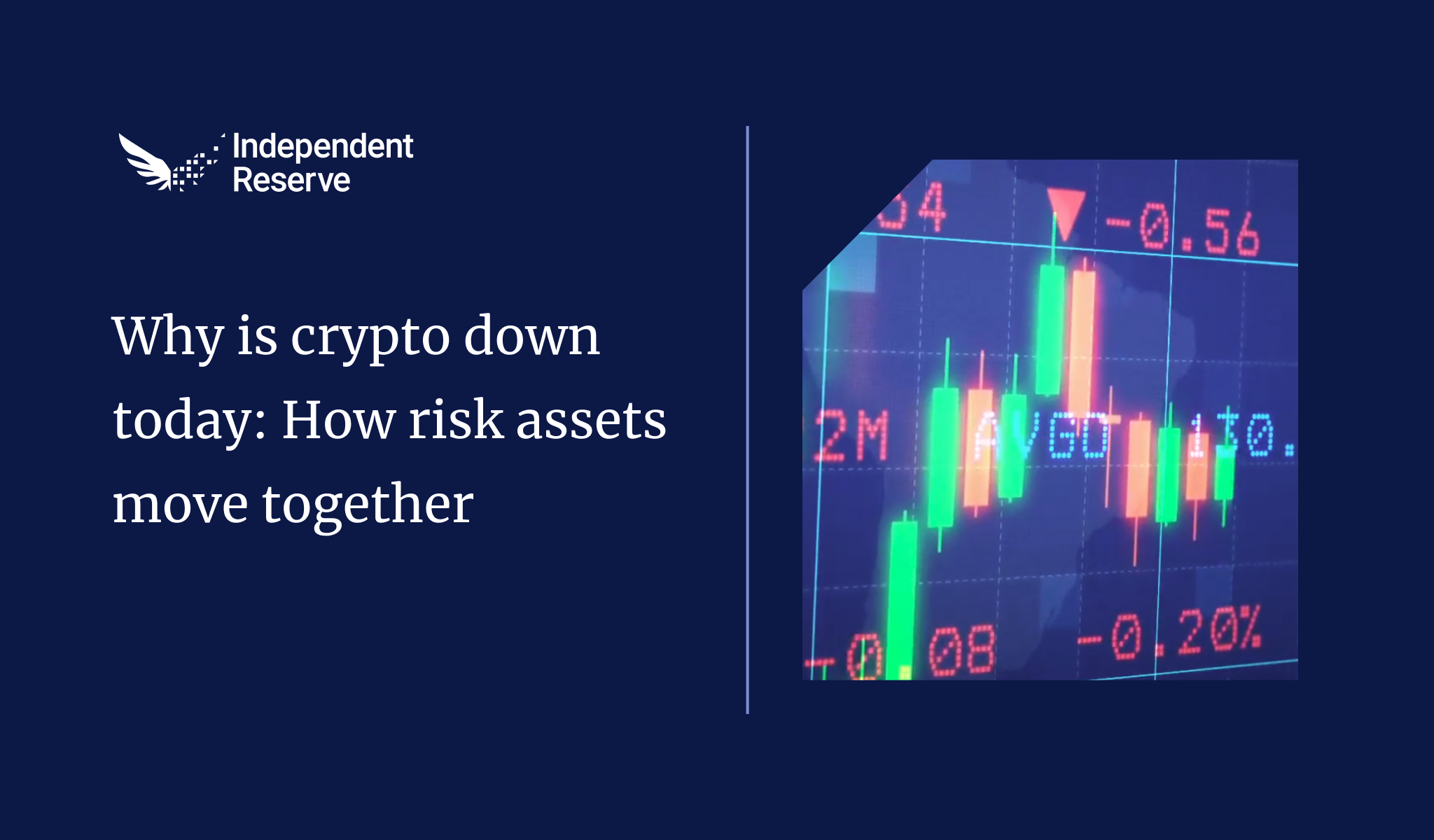In Markets
It’s been a big week for crypto with Bitcoin surging past US$54K ($83.7K) – a level not seen since November 2021, the same month that BTC hit its all-time high. Microstrategy continues to buy, snapping up another 3,000 Bitcoin this month. At the time of writing, Bitcoin was trading around A$83,743 (US$54,770), up 6% on a week ago, and Ethereum was also climbing back toward historic highs at A$4,870 (US$3,185), up 8%. Not every coin joined the party, with Solana and XRP falling 2% each, Cardano and Dogecoin were flat. The Crypto Fear and Greed Index is at 75, or Greed.

From the IR OTC Desk
BTC flows are driving positive price action. On the buy side, ETF inflows continue to swamp bitcoin miner issuance at a near 10:1 ratio (and this is before the halving). While contributors to the supply side remains somewhat unclear, on-chain speculation is suggesting further liquidation from crypto lender Genesis’ Grayscale Bitcoin Trust tokens – and that these liquidations most likely explain some of the Trust wallet movements (as well those unit holders who are product switching to take advantage of preferential custodial fees).
Last week we outlined the supply side dynamics of the bitcoin protocol and explained how the supply side of BTC is completely different to historical commodities (like gold) which balance output on an economic profit cycle. This week we would like to discuss nominal asset levels and why over time these absolute levels become of less relevance. This is not cryptocurrency specific but holds true for all assets.
According to GlobalData.com BTC reached its highest value on the 9th of November 2021 with a price of US $67,617.02. For completeness, this is the high in absolute money terms, or the ‘nominal high’ of BTC. Importantly for asset pricing, markets often get caught up in nominal values rather than the inflation adjusted value, or ‘real’ value. The reason for this is simple: the nominal value is exactly what is printed on the chart with no ambiguity of what inflationary pressures should be attributed to adjust and normalise the asset price over time.
What is important to note for more recent nominal asset price levels (like BTC) is that inflation has been significant over the last four years – well above central bank target levels. If we take the broad United States YoY inflation basket as the measure, the average YoY inflation rate for 2021 was 4.7%; for 2022, 8%; for 2023, 4.1%; and in 2024 sits currently at 3.1%. As a projection, an inflation adjusted 9th of November 2021 high could sit much closer to US $75-80k in today’s money.
On the OTC desk, USDT flows have materially increased, with material selling occurring in the Asian session, before becoming more balanced in the US. USDT remains a good proxy for cryptocurrency euphoria, as the broad market uses USDT to onramp into DeFi. While we are not seeing a specific increase in this flow, we continue to monitor Tether’s relationship with USD for this very reason. Currently USDT/USD is trading at 1.0005 mid-market, or highly euphoric.
As token prices increase, we expect that lending protocols will also increase in demand. This could see cross collateralisation between BTC and ETH become highly topical, as BTC holders seek ways to earn yield on their tokens. Over time, this draws focus to the ETH/BTC ratio, which amongst other things, may become a proxy for lending requirements between protocols as well as token hedging correlations. Watch this space.
For any further information, please feel free to reach out.
In Headlines
Crypto ownership in Australia hits 27.5%
The 5th Australian Independent Reserve Cryptocurrency Index (IRCI) 2024, surveying over 2,100 Australians, reveals growing awareness, positive sentiment, and cautious optimism. The index score increased by 5 points to 50, reflecting these trends alongside increased profits and short to medium-term confidence. Notably, 25% of respondents viewed Bitcoin more favourably after the Bitcoin spot ETF approval. However, rising interest rates and everyday costs remain significant barriers to entry for many Australians. Learn more about these findings in the full IRCI 2024 report and blog post.
Bitcoin ETFs going strong
While inflows aren’t yet available, BlackRock’s ETF nearly hit US$1 billion (A$1.53B) in trading volume on Monday, making it a record-breaking day. It was another big week for the ETFs. Apart from a single negative day on February 21, they raked in up to a quarter of a billion US dollars each day last week. This week, Bloomberg ETF analyst Eric Balchunas has published a piece calling the Bitcoin ETFs the “most successful launch in history” and tipping they are on track to surpass the Gold ETFs in size within two years.
The Satoshi files
A huge cache of unreleased emails from Satoshi Nakamoto came into the public domain this week thanks to the COPA lawsuit against Craig Wright (which is going badly for the Australian as various forgeries come to light). The emails show a fascinating glimpse into the mind of Bitcoin’s creator – Bitcoin’s 21 million supply limit was an “educated guess“, he figured that if Bitcoin ended up being worth a lot, people could just shift the decimal place for what is considered one unit, and he even endorsed the word “cryptocurrency” to describe Bitcoin. The email cache also sparked a fresh guessing game as to Satoshi’s identity: was it Hal “running Bitcoin” Finney, and if so, how did he run a marathon at the same time Satoshi was writing emails? Or was it Twitter founder Jack Dorsey, given Satoshi mentioned he liked blue squares (Block was formerly named Square) and also mentioned the word BlueSky (Dorsey’s new social media platform).
Ethereum ETF speculation increases
Grayscale CEO Michael Sonnenshein told CNBC’s Squawk Box that a spot Ethereum ETF was “a matter of when, not a matter of if.” He said the company would follow the same pattern of work, focused on investor protections, that got the Bitcoin ETFs approved but added that it was “too early to say” if Grayscale would have to go to court to force the SEC’s hand again. While the deadline for a decision is up in May, the SEC is yet to engage with issuers in the way it did in the lead-up to the Bitcoin ETF approval. However, various issuers have been updating their filings.
SEC sued Kraken the day after unfavourable testimony
Kraken CEO Dave Ripley claimed the “real story” behind the SEC taking the exchange to court was as payback for the exchange testifying about the SEC’s overreach to the House Financial Services Committee. “The next day, the SEC called Kraken to say it would sue. Crypto innovators in the United States should not have to fear retaliation for their political speech.” Coinbase’s lawyer, Paul Grewal, tweeted, “they got a whole day? … we got sued something like two hours before.” Kraken has moved to dismiss the SEC’s case, stating there was no fraud or consumer harm and none of the assets named in the suit were investment contracts.
Tron loses USDC
Circle has announced it will cease supporting USDC on the Tron blockchain, suggesting it was necessary to ensure the stablecoin remains “trusted, transparent and safe.” Tether refused to confirm or deny if it would also cease support for USDT on Tron, which probably means USDT will stay on the network.
Miners score court victory
Bitcoin miner Riot Platforms and the Texas Blockchain Council have notched up a big win against the US government’s efforts to force miners to provide energy consumption information via a controversial mining survey. The court enforced a temporary restraining order against the Energy Information Administration preventing it from seeking any more data or sharing any data it has already collected. The court believes the EIA has likely misused its authority to issue the survey under emergency provisions. The restraining order will lapse in a month, so this story has further to run.
Bitcoin ETFs added to investment platforms
Investment advisory Carson Group, which has US$30 billion ($46B) on its platform, has now added four Bitcoin ETFs, including BlackRock’s iShares Bitcoin Trust, the Fidelity Wise Origin Bitcoin Fund, and the smaller ETFs from Bitwise and Franklin Templeton. Hunter Horsley, chief executive of Bitwise, said the addition was a big deal and noted that half of US wealth was on these platforms. “We frequently hear ‘I want access to Bitcoin, but our platform hasn’t approved anything yet.’ The platforms are busy, but now that there are ETFs and a few over a billion AUM, they’re doing the work.”
Uniswap surges after proposal to flip the fee switch
Uniswap is the most popular decentralised exchange in the world, but until now, its UNI token was a fairly useless “governance token” given that VCs own an enormous percentage of the supply and can outvote the community. But Erin Koen from the Uniswap Foundation has submitted a governance proposal to turn on the fee switch, which would give token holders a slice of the revenue. Stakers will only get a slice of fee revenue if they delegate their votes, which is a bit like voting for your local MP. This aims to increase participation in governance. UNI is up 37% this week.
Until next week, Happy Trading!


